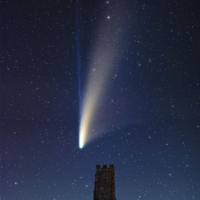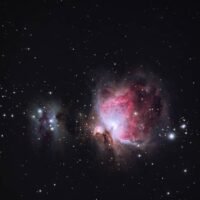The Venus and Pleiades conjunction was a celestial spectacle where the bright planet Venus appeared to pass close to the Pleiades star cluster, also known as the Seven Sisters, in the night sky. This rare event is highly anticipated by stargazers due to its striking visual beauty and significance in astronomy.
Key Details of the Event:
- Date and Visibility:
- Visible to the naked eye shortly after sunset in the western sky.
- The Pleiades:
- A star cluster located in the constellation Taurus, known for its close-knit grouping of bright, blue-tinged stars.
- The cluster holds cultural and mythological significance in many traditions worldwide.
- Venus:
- The third brightest object in the sky after the Sun and Moon.
- Shining as the “Evening Star,” Venus’s brilliance created a striking contrast with the delicate cluster of the Pleiades.
- Celestial Geometry:
- Venus appeared to move through or very close to the cluster, creating a mesmerizing alignment.
- The conjunction was a line-of-sight phenomenon, with Venus being much closer to Earth than the distant stars of the Pleiades.
- Astronomical Significance:
- Conjunctions like this are relatively rare, occurring roughly every eight years due to the cyclic patterns of Venus’s orbit.
- Cultural and Aesthetic Appeal:
- The event was a natural showcase of cosmic harmony, inspiring awe among observers.
- It served as a reminder of the ancient connection between humanity and the stars.
Observers equipped with telescopes or cameras captured breathtaking images, but even a simple glance revealed the enchanting proximity of the radiant Venus to the glittering star cluster. It was an unforgettable moment for astronomy enthusiasts and casual stargazers alike.















